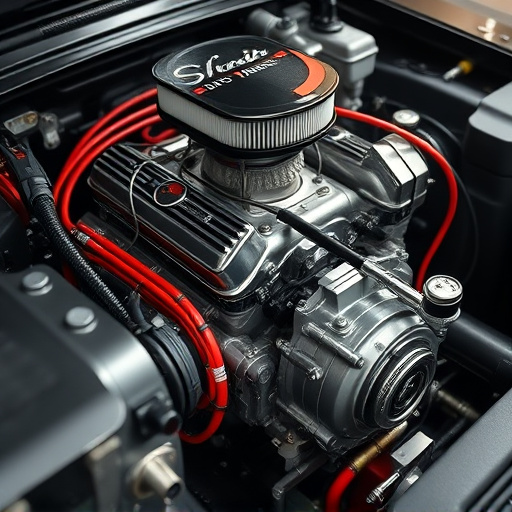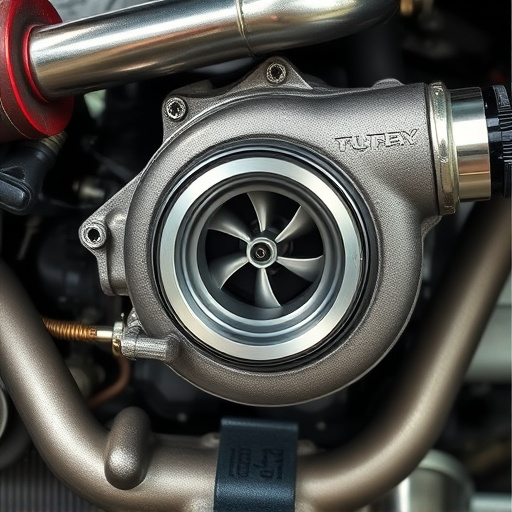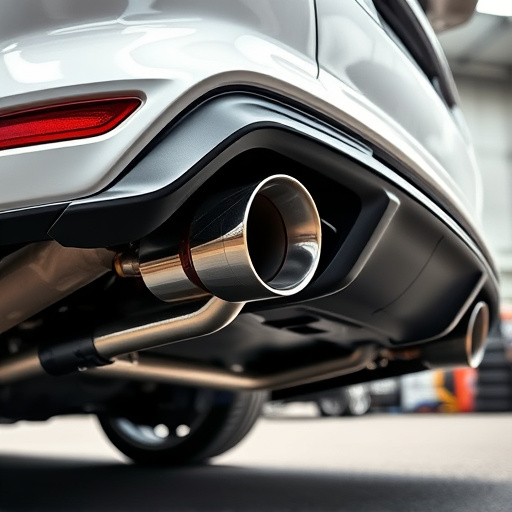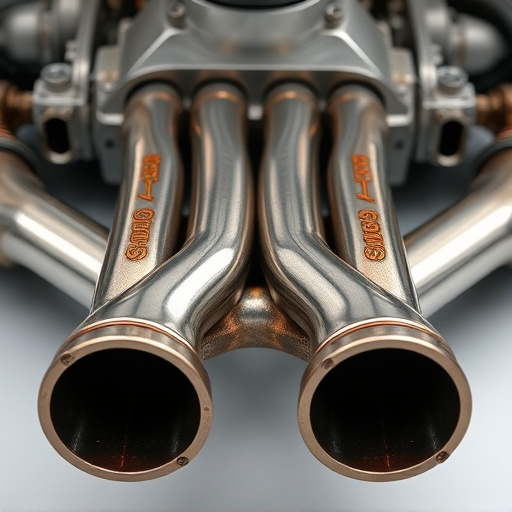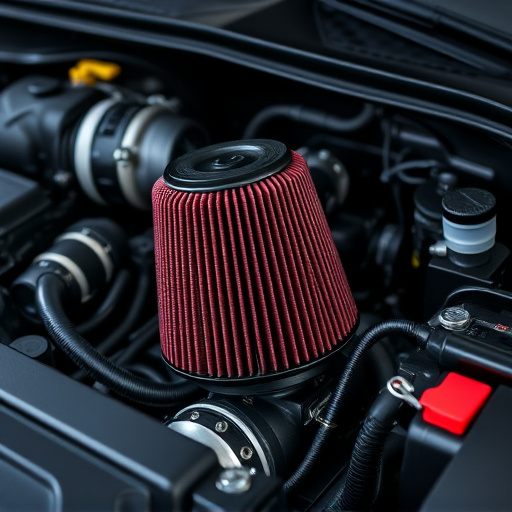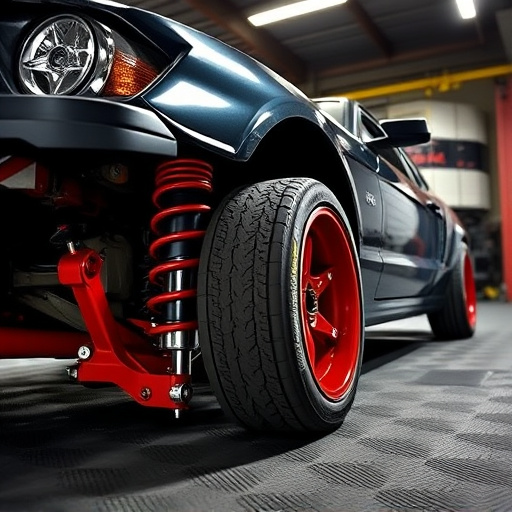The evolution of exhaust systems for cars combines performance enhancement with environmental responsibility. Traditional components like headers, catalytic converters, and mufflers ensure smooth engine operation and meet emission standards. Modern advancements use lightweight materials like carbon fiber to improve fuel efficiency. Recent trends offer customizable exhaust notes while adhering to noise pollution regulations through advanced muffler designs. Current challenges include noise pollution and stricter environmental rules, but manufacturers are innovating with lighter, more efficient systems that promise better performance, improved fuel economy, and reduced emissions without compromising noise reduction.
The future of exhaust systems is undergoing a quiet revolution, driven by advancements in technology and the push for more sustainable mobility. As electric vehicles (EVs) gain traction, traditional exhaust systems are being re-imagined to meet new environmental standards. This article explores the current state of car exhaust systems, delving into their challenges—noise pollution, fuel efficiency, and performance—while highlighting emerging trends that promise significant changes. From lightweight materials to quantum technology and smart exhaust systems, these innovations point to a greener, more efficient future for exhaust management in cars.
- Current State of Exhaust Systems in Cars
- – Traditional exhaust systems: how they work and common materials used
- – Challenges with current systems: noise pollution, fuel efficiency, performance impact
Current State of Exhaust Systems in Cars
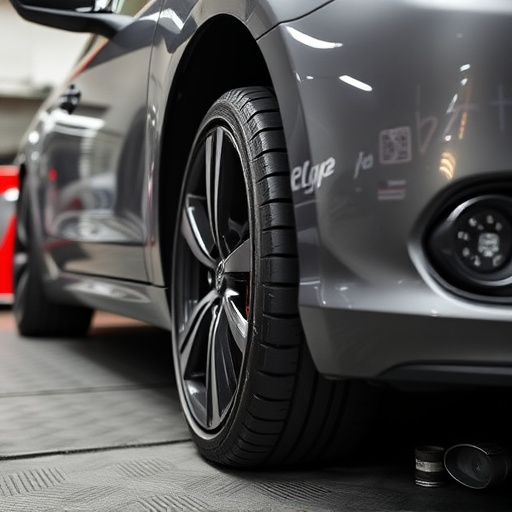
The current state of exhaust systems in cars reflects a delicate balance between performance and environmental considerations. Traditional exhaust systems primarily focus on removing toxic gases and noise from the engine, with key components like headers, catalytic converters, and muffler tips ensuring smooth operation and compliance with emission standards. However, advancements in technology have led to a more nuanced approach, integrating advanced materials and designs that not only enhance performance but also contribute to fuel efficiency and reduced environmental impact.
Modern cars are increasingly equipped with sophisticated exhaust systems that incorporate innovative features. For instance, the integration of air intake systems designed for optimal airflow can significantly improve engine performance, while lightweight materials in exhaust components, such as carbon fiber, reduce overall vehicle weight, leading to better fuel economy. Moreover, recent trends show a growing emphasis on customizable exhaust notes, allowing drivers to personalize their vehicles’ sound without compromising on noise pollution levels, thanks to advanced muffler designs and tunable exhaust systems.
– Traditional exhaust systems: how they work and common materials used
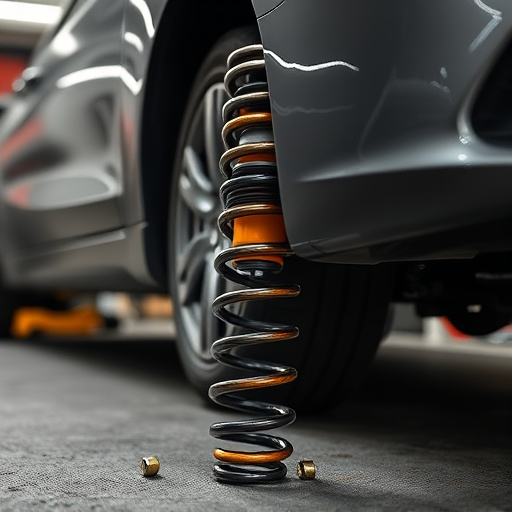
Traditional exhaust systems for cars serve a vital purpose—they facilitate the removal of combustion gases from the engine, enabling efficient operation and reducing emissions. These systems typically consist of several components: the cylinder head, manifold, catalytic converter, muffler, and exhaust pipes. Common materials include stainless steel, aluminum, and plastic for various sections to withstand high temperatures and pressure while ensuring structural integrity.
In terms of performance exhaust, cat back exhaust systems have emerged as a popular upgrade for vehicle owners seeking enhanced performance. These systems replace the stock components with high-performance parts, including optimized headers, larger diameter pipes, and advanced mufflers, allowing for smoother gas flow, increased horsepower, and improved torque, thus catering to the needs of automotive enthusiasts who prioritize speed and acceleration.
– Challenges with current systems: noise pollution, fuel efficiency, performance impact

The current state of exhaust systems for cars presents several challenges that engineers and designers are actively working to overcome. One of the primary concerns is noise pollution, with traditional exhaust systems contributing significantly to urban sound levels. The constant evolution of stricter environmental regulations further complicates matters, pushing manufacturers to develop quieter yet more efficient solutions.
Another critical issue is fuel efficiency and its impact on performance. Current systems often compromise between power output and fuel economy, especially in the face of increasing demand for lower emissions. Innovations in material science and design are addressing these challenges, aiming to create lighter components, improve airflow dynamics, and enhance catalytic conversion efficiency. These advancements promise to revolutionize exhaust systems, delivering better performance, improved fuel efficiency, and reduced environmental impact without compromising on noise reduction.
The future of exhaust systems for cars is poised for significant evolution, driven by growing demands for quieter environments, enhanced fuel efficiency, and improved overall vehicle performance. Innovations such as advanced materials, catalytic converters with higher efficiency, and integrated noise reduction technologies will play a pivotal role in shaping the industry. These trends promise not only to mitigate noise pollution but also to contribute to a more sustainable future, addressing key challenges faced by current exhaust systems.






